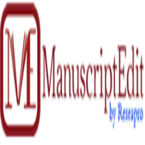Scientific sessions /tracks
Advanced techniques in structural biology—such as
cryo-EM, X-ray crystallography, NMR, and integrative modeling—have revolutionized our understanding of biomolecular structures and their functions. These tools allow scientists to visualize complex proteins and molecular assemblies with remarkable precision. Looking ahead, innovations like
AI-driven structure prediction and cellular cryo-ET promise to reveal dynamic molecular processes in real time. Such advances will significantly impact drug discovery, disease research, and the future of personalized medicine.
AI & Computational Structural Biology are transforming the way scientists study biomolecules by enabling faster, more accurate structure prediction and analysis. Tools like AlphaFold and Rose TTA Fold have revolutionized
protein structure prediction, reducing the need for time-consuming experimental methods. Computational approaches also support molecular modeling, docking, and dynamics simulations, helping researchers understand interactions, design drugs, and
predict mutations. These technologies are essential for accelerating discoveries,
improving precision medicine, and bridging the gap between structural data and functional insights. Their importance continues to grow as they integrate with experimental techniques to offer a more complete view of biological systems.
Structure-function relationships refer to the concept that the
three-dimensional structure of a biological molecule—such as a protein, enzyme, or nucleic acid—directly determines its function. The specific shape, folding, and arrangement of atoms within a molecule enable it to interact with other molecules, perform chemical reactions, or carry out biological roles. Even small changes in structure, like
mutations or
misfolding, can significantly affect a molecule’s activity and lead to diseases. Understanding
structure-function relationships is essential in fields like drug design, enzyme engineering, and
disease research, as it helps scientists predict how molecules work and how to modify them for therapeutic purposes.
Membrane proteins and receptors are vital components of cell membranes, responsible for
transporting molecules, transmitting signals, and
maintaining cellular communication. They include ion channels, transporters, and G-protein-coupled receptors (GPCRs), which play key roles in numerous physiological processes. Despite their complexity and structural challenges, studying these proteins is crucial, as over 50% of current drugs target membrane proteins. Understanding their structures helps in unraveling disease mechanisms and designing more effective, targeted therapies. Their importance continues to rise with advancements in cryo-EM and other structural tools that now make high-resolution visualization possible.
3D structure determination involves uncovering the
three-dimensional shape of biomolecules like proteins and nucleic acids using techniques such as
X-ray crystallography, NMR spectroscopy, and cryo-electron microscopy (cryo-EM). These structures reveal how molecules function, interact, and change during biological processes. Understanding a molecule’s 3D shape is essential for identifying active sites,
designing drugs, and engineering proteins for therapeutic or industrial use. Accurate structural data also provides insights into
disease mechanisms and enables structure-based drug discovery, making it a cornerstone of modern biomedical research.
Computational approaches in structural biology involve the use of
algorithms,
simulations, and
modeling tools to predict, analyze, and visualize the structures and dynamics of biomolecules. These methods complement experimental techniques by enabling researchers to study large complexes, dynamic interactions, and difficult-to-crystallize proteins. Key tools include molecular dynamics simulations,
protein-protein docking, homology modeling, and
AI-based structure prediction. Their importance lies in accelerating discoveries, reducing experimental costs, guiding drug design, and offering insights into biological mechanisms that are otherwise hard to capture in the lab.
Structure-based drug discovery (SBDD) is a powerful approach that uses the 3D structure of biological targets—such as proteins or enzymes—to design and d
evelop new drugs. By understanding the molecular architecture of a target, researchers can identify active sites, predict binding interactions, and design molecules that fit precisely, increasing drug specificity and efficacy. Techniques like
cryo-EM, X-ray crystallography, and computational modeling play a key role in this process. SBDD significantly reduces trial-and-error in drug development, accelerates lead optimization, and is essential for creating targeted therapies with fewer side effects, making it a cornerstone of modern pharmaceutical research.
Structural virology focuses on determining the
3D structures of viruses and their components, such as capsids, envelope proteins, and
viral enzymes. By understanding how viruses assemble, enter host cells, and replicate, scientists gain crucial insights into their life cycles and
mechanisms of infection. This structural knowledge is essential for designing antiviral drugs, vaccines, and therapeutic antibodies. In the context of infectious diseases, structural virology plays a vital role in rapid response to emerging pathogens—such as SARS-CoV-2—by revealing targets for treatment and prevention. It bridges molecular understanding with real-world medical solutions, making it key in global health defense.
Proteomics and genomics are complementary fields that provide a comprehensive understanding of biological systems. Genomics involves the study of an organism’s entire
genetic material (DNA), helping identify genes,
mutations, and their roles in health and
disease.
Proteomics, on the other hand, focuses on the full set of proteins expressed by a genome, including their structures, functions, and interactions. Together, they offer insights into how genetic information is translated into functional molecules and how changes at the DNA level affect cellular behavior. Their importance lies in advancing personalized medicine, biomarker discovery, and the development of targeted therapies for complex diseases.
The primary aim of integrating structural biology into cancer research is to design and discover novel, effective drugs that can target
cancer at the molecular level. By combining structural biology with molecular modeling, researchers can understand how cancer-related
biomolecules function and interact, enabling precise drug design. This approach accelerates the development of targeted therapies with higher efficacy and fewer side effects. As a result, a significant portion of structural biology research today is focused on cancer, with many leading scientists dedicating their efforts to unraveling the molecular mechanisms behind the disease to drive innovation in cancer treatment.
Biochemistry is the study of chemical processes and substances that occur within living organisms. It plays a crucial role in understanding the molecular foundations of life by exploring how proteins, nucleic acids, lipids, and carbohydrates function within cells. Recently, biochemistry has gained immense importance across all areas of biosciences and biotechnology, as it provides the basis for fields like molecular biology, genetics, pharmacology, and
medicine. By regulating information flow through biochemical signaling and managing energy via
metabolic pathways, biochemistry explains how cellular processes are coordinated. Its importance lies in uncovering the mechanisms of health and disease, paving the way for the development of diagnostics, therapies, and innovative treatments.
Biophysics is that the trending topic within the field of biology. It relates physics and biology. In other words, it signifies how traditional physical methods are wont to study the biological phenomena inside the physical body. Biophysical research shares significant overlap with biochemistry, biology, chemistry, physiology, nanotechnology, bioengineering, computational biology, biomechanics and systems biology.
The structural basis of disease refers to understanding how changes in the 3D structures of biomolecules—such as proteins, enzymes, or nucleic acids—lead to the onset and progression of diseases. Mutations, misfolding, or abnormal interactions at the molecular level can disrupt normal biological functions and cause conditions like
cancer, neurodegenerative disorders, and
genetic diseases. By studying these structural changes, scientists can identify disease mechanisms, discover potential drug targets, and design more effective, structure-based therapies. This approach is crucial for developing
precision medicine, as it links molecular abnormalities to clinical outcomes, enabling more accurate diagnosis and targeted treatment.
Structure-based solutions to global health challenges involve using detailed knowledge of the 3D structures of biomolecules to tackle pressing medical issues such as
infectious diseases,
cancer, and antibiotic resistance. By understanding how proteins and pathogens function at the molecular level, researchers can design highly specific drugs, vaccines, and diagnostics. This approach accelerates the development of targeted therapies and improves their effectiveness while reducing side effects. Structural biology thus plays a vital role in responding to global health threats by enabling rapid drug discovery, guiding vaccine design, and supporting efforts in personalized and precision medicine across diverse populations.
Hybrid approaches for structure prediction combine multiple experimental and computational techniques to determine the accurate
3D structures of biomolecules, especially large or complex systems that are difficult to study using a single method. These approaches may integrate data from cryo-electron microscopy (cryo-EM), X-ray crystallography, NMR spectroscopy, small-angle X-ray scattering (SAXS), mass spectrometry, and computational modeling to build comprehensive structural models.
The importance of hybrid methods lies in their ability to provide more complete, flexible, and accurate structures, particularly for dynamic or multi-component molecular assemblies. They allow researchers to overcome limitations of individual techniques and gain deeper insights into biological mechanisms, aiding in drug discovery, understanding disease processes, and advancing structural systems biology.
Structural virology is the study of the three-dimensional
structures of viruses and their components—such as
capsids, envelope proteins, and
viral enzymes—at the atomic or molecular level. By using advanced techniques like cryo-electron microscopy, X-ray crystallography, and NMR spectroscopy, researchers can visualize how viruses assemble, infect host cells, and replicate.
The importance of structural virology lies in its ability to reveal critical viral mechanisms, which are essential for the development of antiviral drugs, vaccines, and therapeutic antibodies. It plays a key role in combating global health threats by enabling the rapid identification of drug targets and guiding the rational design of effective treatments and immunizations, as seen in responses to viruses like
HIV, influenza, and S
ARS-CoV-2.
Structural bioinformatics and computational biology are interdisciplinary fields that use computational tools and algorithms to analyze, predict, and model the
three-dimensional structures of biological
macromolecules. Structural bioinformatics focuses on the storage, analysis, and visualization of structural data, while computational biology applies mathematical models and simulations to study biological processes at the molecular level. These fields play a vital role in protein
structure prediction, molecular docking, drug design, and understanding biomolecular interactions. Their importance lies in accelerating research, reducing experimental costs, and enabling the exploration of complex biological systems that are difficult to study through traditional laboratory methods alone.
Molecular modeling involves hypothetical and computational procedures used to mimic the behavior of
macromolecules. These techniques are applied in various fields such as drug design, computational chemistry, materials science, and computational biology. They help in studying and understanding the structural and
functional properties of molecules. One of the major applications of molecular modeling is molecular simulation, which uses powerful computers to simulate interactions between atoms and explore the properties of materials. Such simulations range from highly detailed quantum mechanical calculations at the atomic level to coarse-grained classical dynamics of large molecular systems over timescales of milliseconds or longer.
Molecular dynamics (MD) specifically focuses on studying the physical movements of atoms and molecules using
simulation techniques, and is classified as a type of N-body simulation. Atoms and molecules are allowed to interact over a fixed time period, providing insight into the dynamic evolution of the system. Their trajectories are typically determined by numerically solving Newton’s equations of motion for groups of interacting particles. The forces and potential energies are calculated using interatomic potentials or molecular mechanics force fields. An extension of this method, Steered Molecular Dynamics (SMD), allows researchers to apply external forces to simulate mechanical unfolding or molecular recognition processes in a more targeted manner.
A biomarker is an attribute which will be studied as an
indicator of pathogenic and biological operation alongside pharmacological retort to a therapeutic involvement. They indicate either normal or diseased activity within the body. Biomarkers are specific molecules, genes, gene products, hormones, cells or enzymes.
Drug Designing is an ingenious process to seek out
new medication centered on the knowledge of biological target. Drug is most ordinarily a little molecule that inhibits or activates the function of a biomolecule, which successively outcomes during a therapeutic benefit to the patient. Drug design commonly but not essentially relies on computational techniques. This sort of modelling is usually mentioned to as computer-aided drug design.
Market analysis
Assets apportioned to Structural Biology Research:
Between 2022 and 2024, structural biology research has attracted substantial funding from both governmental and private sectors across the globe. In the UK, the Higher Education Funding Council for England (HEFCE) is set to allocate £1.6 billion for research activities, while the government is committing approximately £70 million annually to structural biology infrastructure. Australia is investing around $8 million in biotechnological and biomedical innovations. Meanwhile, Japan’s Ministry of Education, Culture, Sports, Science and Technology (MEXT) has designated US$12 billion for research and development, which includes structural biology.
In the United States, major health agencies are making significant contributions. The National Institute on Drug Abuse (NIDA) has allocated $380 million to support drug development research, while the National Cancer Institute (NCI) provides an annual budget of $5.5 billion, covering molecular and structural biology studies. Additionally, the National Institute of General Medical Sciences (NIGMS) plans to fund 3 to 6 specialized research centers, each receiving up to $3 million. The surge in interest around biotechnology, drug discovery, personalized medicine, and cancer research continues to drive these investments, with the Asia-Pacific region emerging as a key growth area due to its expanding pharmaceutical and biotech industries.
Market Value of Structural Biology:
The global structural biology market, valued at USD 41.34 billion in 2021, is expected to grow at a CAGR of 7.6% through 2024, reaching over USD 45 billion. This growth is driven by increasing demand for drug discovery and personalized medicine, advancements in technologies like Cryo-EM, X-ray crystallography, and AI integration, and rising investments from both governments and private sectors in biotechnology and pharmaceuticals. Structural biology plays a critical role in understanding disease mechanisms, particularly in cancer, neurodegenerative disorders, and chronic diseases, fueling the need for innovative treatments. The Asia-Pacific region, led by China, India, and Japan, is expected to experience the highest growth, with a projected CAGR of 23%. As the market continues to expand, structural biology remains essential for advancing drug development, biologics, and precision medicine.





















